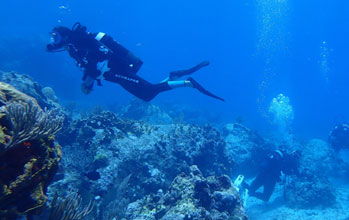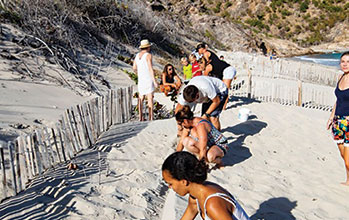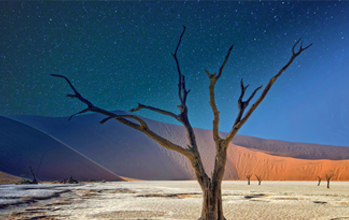
Namibia, with its capital Windhoek, is a country in south-west Africa. It is characterized by the Namib Desert, which borders the Atlantic Ocean. The country is home to a wide variety of fl ora and fauna. On a safari in Namibia, you’ll discover lunar landscapes, canyons, and savannahs – a veritable kaleidoscope of colors and landscapes. You’ll fi nd yourself out of time and in perfect communion with nature. These landscapes are home to a rich diversity of flora and fauna.
 Let’s take a look at just a few of the must-see stops in this magical, little-known country. The Sreetshoogte Pass, for instance, offers a breathtaking view over the Namib Desert. Twyfelfontein, a UNESCO World Heritage Site, is another captivating destination.
Let’s take a look at just a few of the must-see stops in this magical, little-known country. The Sreetshoogte Pass, for instance, offers a breathtaking view over the Namib Desert. Twyfelfontein, a UNESCO World Heritage Site, is another captivating destination.
Etosha Park, home to a plethora of wildlife, including predators, antelopes, pachyderms, zebras, gazelles, lions, giraffes, wildebeests, hyenas, and leopards, is a wildlife enthusiast’s paradise. During the wet season, the park’s lake fi lls with salt water, becoming a unique watering hole for the animals. It is mainly in this park that safaris are conducted. In the dry season, the landscape transforms into a dry and arid expanse, resembling a salt marsh.
 Sossuvlei and its lunar landscapes are situated in the heart of the Namib Desert. Arrive before sunrise, and you’ll be amazed by the beauty of the dunes, where warm colors contrast with dry, salt-bleached ponds. Walvis Bay, hosting pink fl amingos and fur seals, is best explored by kayak for an up-close encounter with these fascinating creatures. The Spitzkoppe, a must-see hike amidst phantasmagorical mineral formations, leads to the Brandberg massif, Namibia’s highest massif adorned with thousands of rock paintings.
Sossuvlei and its lunar landscapes are situated in the heart of the Namib Desert. Arrive before sunrise, and you’ll be amazed by the beauty of the dunes, where warm colors contrast with dry, salt-bleached ponds. Walvis Bay, hosting pink fl amingos and fur seals, is best explored by kayak for an up-close encounter with these fascinating creatures. The Spitzkoppe, a must-see hike amidst phantasmagorical mineral formations, leads to the Brandberg massif, Namibia’s highest massif adorned with thousands of rock paintings.
 Damaraland, with its raw beauty of granite plateaus, basalts, and red sandstones, is a must on any Namibian safari. This rugged terrain is home to an impressive array of wildlife.
Damaraland, with its raw beauty of granite plateaus, basalts, and red sandstones, is a must on any Namibian safari. This rugged terrain is home to an impressive array of wildlife.
D’une beauté brute, le Damaraland est une étape incontournable de tout safari Namibien. Plateaux granitiques, basaltes et grès rouges où se côtoie une faune sauvage impressionnante.
 A short stop in Opuwo reveals a vibrant market where indigenous communities converge. Moving towards the country’s edge, Kaokoland shares a border with Angola, marked by the Kunène River. The Epupa Falls stretch over 800 meters and rank among the most beautiful on the planet.
A short stop in Opuwo reveals a vibrant market where indigenous communities converge. Moving towards the country’s edge, Kaokoland shares a border with Angola, marked by the Kunène River. The Epupa Falls stretch over 800 meters and rank among the most beautiful on the planet.
 Beyond the flora and fauna, encounters with indigenous people offer a genuine return to basics. Notably, the Himba people in the Kaokoland region, with their archaic customs, have preserved traditions due to the inaccessibility of their territory. Meeting these communities follows certain rules – intrigued? Come and visit us, and unlock the secrets of Namibia!
Beyond the flora and fauna, encounters with indigenous people offer a genuine return to basics. Notably, the Himba people in the Kaokoland region, with their archaic customs, have preserved traditions due to the inaccessibility of their territory. Meeting these communities follows certain rules – intrigued? Come and visit us, and unlock the secrets of Namibia!



